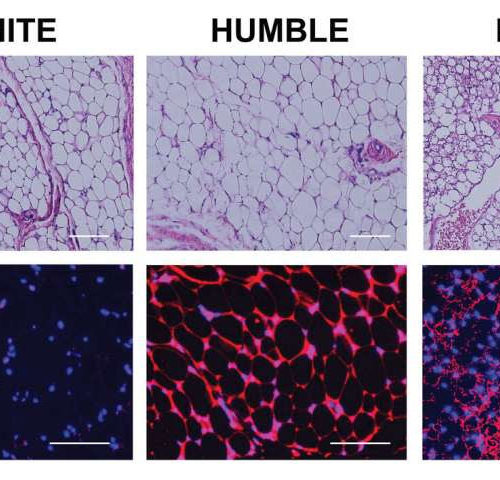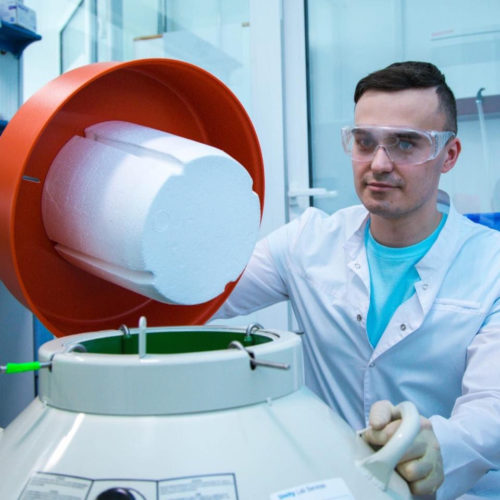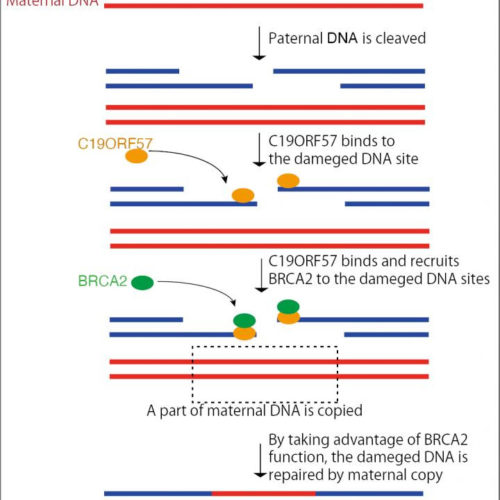Posted Today These small particles are reminiscent of paper flowers or desert roses. Physicians can use them to guide medicines to a precise destination within the body. Better yet, the particles can easily be tracked using ultrasound as they scatter sound waves. These flower-like zinc oxide particles are three micrometres in size (colourised electron microscope image)....
Tag: <span>Microscopic</span>
Transplanted brown-fat-like cells hold promise for obesity and diabetes
by Joslin Diabetes Center Microscopic images of the various types of fat tissues developed in mice after transplantation. Top panels show the fat tissue’s general morphology, and the bottom panels are the tissue sections stained with hUCP1 (red color), which is unique for brown fat cells. These images show that while the HUMBLE fat cells...
Scientists found out how nanoparticles kill cancer cells
In the authors’ opinion, this research will help to treat oncology IMMANUEL KANT BALTIC FEDERAL UNIVERSITY CREDIT: IMMANUEL KANT BALTIC FEDERAL UNIVERSITY Scientists from the Immanuel Kant Baltic Federal University (IKBFU) and National University of Science and Technology “MISiS” have studied how magnet nanoparticles affect cancer cells in the human liver. In the authors’ opinion,...
Hookworm trial offers new hope to MS patients
Parasitic worms could offer a new treatment hope for patients suffering from the autoimmune disease multiple sclerosis, according to experts from the University of Nottingham. The findings of the research, published in the journal JAMA Neurology, show that infecting MS patients with a safe dose of the hookworm parasite Necator americanus induces immunoregulatory responses and...
Discovery of a novel gene involved in DNA damage repair and male fertility
Clarifying the mechanisms for meiotic recombination in sperm production KUMAMOTO UNIVERSITY A research group from the Institute of Molecular Embryology and Genetics (IMEG)at Kumamoto University, Japan has discovered that the gene C19ORF57 plays a critical role in meiosis. The gene appears to be related to the cause of male infertility and could be a big...
Research, Underexplored until Recently, Could Produce Alzheimer’s Treatments
By Kenneth S. Kosik | Scientific American Research into the brain’s protein-disposal systems, electrical activity and three other areas looks promising Attempts to treat Alzheimer’s have floundered because scientists have spent too little time thinking deeply about the underlying biology of this ailment. Recent advances in understanding the brain’s protein-disposal systems, the role of inflammation,...
Advanced microscopy reveals unusual DNA structure
Sandia scientist pushes technology’s limits to see fundamental feature of stretched S-DNA An advanced imaging technique reveals new structural details of S-DNA, ladder-like DNA that forms when the molecule experiences extreme tension. This work conducted at Sandia National Laboratories and Vrije University in the Netherlands provides the first experimental evidence that S-DNA contains highly tilted...
UH researcher reports the way sickle cells form may be key to stopping them
Process could be similar to how first living cells formed; applications to industry possible UNIVERSITY OF HOUSTON University of Houston associate professor of chemistry, Vassiliy Lubchenko, is reporting a new finding in Nature Communications on how sickle cells are formed. Lubchenko reports that droplets of liquid, enriched in hemoglobin, form clusters inside some red blood cells when two hemoglobin molecules form a bond – but only briefly, for one thousandth...
Microscopic, Remotely Powered Implant to Read, Transmit Brainwaves from Inside Skull
Brain-computer interfaces and other technologies that rely on reading and stimulating the brain require electrodes to obtain and deliver signals, as well as a way to transmit those signals from within the brain. Electric wires have usually served as the method of connectivity, but they create serious challenges, including a potential for infection, safety issues,...




